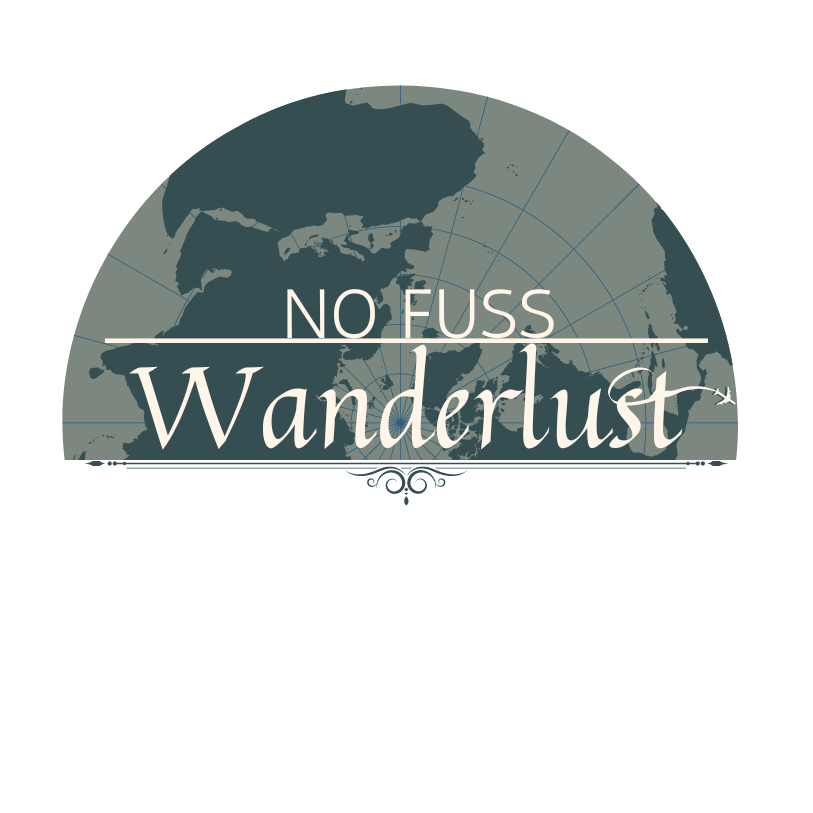Oahu is the most populous of the Hawaiian Islands and is also the state’s capital, with Honolulu being its largest district. Although Waikiki is a famous tourist destination, it is actually a district within Honolulu. Because it is the most popular island, Oahu offers a wider range of activities compared to other inhabited islands. To fully appreciate the island experience as a respectful tourist, it is important to understand the area’s history and cultural traditions.
Polynesian immigration and inhabitants have a long history in Oahu, dating back to 300 CE or even earlier. However, it was only when King Kamehameha I conquered Oahu that the Hawaiian Islands were fully united. The monarchy ended in the late 1800s during Queen Lili’uokalani’s reign when the royal family was victim to a forceful coup sanctioned by the U.S. military before later being annexed as the 50th state in the U.S.
Oahu is the only location in the U.S. that has a royal palace, and it is definitely worth a visit during your trip. I recommend starting your visit with a trip to the Polynesian Cultural Center to gain some cultural awareness before getting into other activities and tours. Oahu is renowned for its stunning beaches, but there is plenty more to explore in this charming corner of the world. This is the beginning of a three-part series on Oahu, aimed at helping you make the most of your Oahu vacation!
Cultural Awareness and Hawaiian Traditions
Polynesian Cultural Center
If you’re visiting Hawaii for the first time or aren’t familiar with the island’s culture, a visit to the Polynesian Cultural Center is highly recommended. Although it’s a popular tourist destination, the center is an excellent introduction to the traditions of the Pacific Island people and their culture. The center has six authentic villages that showcase the buildings, dance, and traditions of the area. In each village, you’ll find student guides from the corresponding island who have come to study in the area. A visit to the center will help you gain a solid foundation of knowledge about the culture and build respect for its people before exploring other parts of the island.
You can choose from various ticket packages, some including the luau at the end of the day, and others without it. If you plan to attend the luau, it’s best to book in advance.
Luaus
If you’re planning a trip to Hawaii, make sure not to miss out on the experience of attending a luau. There are plenty of options available for you to choose from, depending on your preference for showmanship and authenticity. However, one thing that you can be sure of is that the food will always be great. If you’re looking for a large-scale show, then you can consider attending one of the popular ones like the Polynesian Cultural Center, Chief’s Luau, or Germaine’s Luau. On the other hand, if you’re looking for a more intimate and authentic experience, then you can try attending a smaller luau like the Toa Luau at Waimea Falls or the Mauka Warriors Luau at the Country Club. You can easily find a luau that suits your budget and location by doing a quick search on Google.
Statues on Waikiki Beach and Throughout Honolulu
As you stroll along the streets of Honolulu, you will come across several statues of Hawaiian royalty and historical figures. The most iconic of them all is Duke Paoa Kahanamoku’s statue, located at the front of Waikiki Beach, where he used to spend most of his time. Although he was not of royal lineage, he was a swimmer who won Olympic gold medals and played a significant role in popularizing surfing. He was also an ambassador for Hawaiian culture. Across the street from Iolani Palace, you can find King Kamehameha the Great’s towering statue, while Queen Liliuokalani’s statue is also in the area. King Kamehameha III’s statue is at Thomas Square, while King Kamehameha IV and his wife Queen Emma, along with their son Prince Albert, stand in the courtyard of the International Marketplace. As you walk further down Kalakaua Avenue towards the Waikiki Aquarium, you will see Queen Kapiolani’s statue, which welcomes visitors to her namesake park, as well as Prince Jonah Kuhio Kalanianaole’s statue, which is closer to the zoo. These statues are popular among tourists for photo opportunities, and they offer a chance to pay tribute to the Hawaiian culture by presenting flowers, leis, or other honors.
Historical Sites

Iolani Palace
King Kamehameha III established residency on this site in 1845, which was built on an ancient place of worship. However, the Victorian-inspired design we see today was finalized in 1882. The palace was home to five kings before being used as the location for Queen Lili’uokalani’s imprisonment when the monarchy was overthrown in 1898. The palace offers various tours, each with different experiences and details. If you plan on visiting, make sure to book your tour at least a few days in advance, as tickets are only available online and groups are limited. The tours usually end in the room of the Queen’s confinement, where you can see the quilt she and her attendants constructed during her captivity.
Queen Emma Summer Palace
Continue your royalty tour by visiting Queen Emma’s Summer Palace, which is situated in the Nu’uanu Valley. This summer house was used by King Kamehameha IV, Queen Emma, and their son Prince Albert Edward. You can explore the family’s belongings and royal regalia on display, and also enjoy the cool mountain air while wandering the grounds. It is recommended to make reservations for tours, but walk-ins are accepted subject to availability.
Pearl Harbor
The Pearl Harbor Historical Site comprises several memorial parts. Visitors can access some of the smaller outdoor exhibits and the grounds free of charge. However, while entry to the USS Arizona memorial is also free, tickets are limited and require advance booking exactly 56 days before the visit. Additional tickets are released the day prior to the visit, but availability is limited. In my experience, it can be challenging to secure these tickets unless the desired time slots and number of tickets required are flexible. Access to each of the on-site museums incurs charges, as well as audio-tours of the entire Pearl Harbor site.
There are a few things to consider before visiting Pearl Harbor.
- Parking is free but limited.
- There are no bags of any kind allowed on the site, but there are lockers available to rent.
- Most of your time will be spent outdoors with little shade. Be sure to lather up on sunscreen and wear a hat.
- There is no official dress code for the Pearl Habor site, but it is important to dress appropriately for the historical significance of the site. It is also recommended to wear breathable clothing to stay cool.
Must-See Museums

Bishop Museum
Discover the vast collection of artifacts and exhibits at the Bishop Museum of Natural and Cultural History. The Hawaiian Hall showcases the evolution of Hawaiian culture, from legends and beliefs to the significance of nature in daily life, and the defining moments of the islands’ history. Pacific Hall focuses on Polynesian navigation and migration, while the Picture Gallery and Abigail Kinoiki Kekaulike Kahili Room display a stunning collection of paintings, collectibles and royal personal effects.
During our visit, we stumbled upon a special art exhibit of local Hawaii-based street artists. You can still see some of these vibrant murals throughout Bishop Museum’s campus. The Science Adventure Center is a more interactive experience, and is a great place to visit if you have younger kids. The Planetarium is open Friday through Tuesday with different shows played throughout the day.
You don’t need to purchase tickets ahead of time for any of the Bishop Museum exhibits. They can be purchased in the Shop Pacifica or online.
Honolulu Museum of Art
One of my daughter’s favorite places to visit while she was attending school on the island was the Honolulu Museum of Art. This art museum showcases historical works, as well as modern-day exhibits, which converge art, history, and culture in a series of small galleries. Each building is connected by an open-air courtyard, which is breathtaking to see, but also very wet if it’s raining. Every detail from the architecture and gardens to the paintings and textiles on display are a work of art to be admired.
The designated parking lot is located about two blocks away and can be difficult to find. I recommend taking another form of transportation to get there or setting your GPS to the Honolulu Museum of Art School to find the general parking area. This area of downtown Honolulu consists of mostly one-way streets, and it can be confusing to navigate. To explore the museum on your own, tickets can be purchased on site. However if you prefer to join a tour be sure to buy tickets ahead of time.
Get set for travel! Discover our tailor-made itinerary for oahu!
Fun Facts:
- The traditional spelling of this island is actually O’ahu, Hawai’i, and is pronounced with a slight pause where the okina (or apostrophe) is placed.
- Hawaii is the most culturally diverse state in the U.S. due to its unique history of Polynesian voyages and blending with surrounding cultures.
- The Hawaiian Island chain is made up of 137 islands, but only seven are inhabited by people.
- Taking rocks or sand from any of the Hawaiian Islands is believed to bring dreadfully bad luck. Tourists often return these stolen resources in hopes of reversing Pele’s Curse.
- Wearing a flower in the left ear means you’re taken, while a flower on the right ear means you’re available.
- You should always remove your shoes before entering someone’s home in Hawaii.
- Indigenous Hawaiians are referred to as “Hawaiian” while those with ancestral ties to other areas who have lived in the area for generations are referred to as “locals”. Both cultures have influenced modern practices.
As we wrap up this first installment of our Oahu exploration, it’s clear that the island is a treasure trove of history, culture, and adventure waiting to be discovered. From the majestic Iolani Palace, a symbol of Hawaii’s royal past, to the poignant Pearl Harbor memorial, a testament to the island’s resilience, Oahu offers a myriad of experiences that captivate the mind and soul.
Immerse yourself in the vibrant Polynesian traditions at the Polynesian Cultural Center, where you’ll gain a deeper understanding and appreciation for the rich tapestry of Pacific Island cultures. Then, indulge in the mesmerizing spectacle of a traditional luau, where dance, music, and culinary delights come together to create an unforgettable experience.
As you wander through Honolulu’s streets, don’t miss the opportunity to pay homage to Hawaii’s legendary figures, from King Kamehameha the Great to Queen Liliuokalani, whose statues stand as guardians of the island’s history and heritage. And be sure to delve into the fascinating exhibits at the Bishop Museum and Honolulu Museum of Art, where you’ll uncover the stories of Hawaii’s past and present through art, artifacts, and interactive displays.
With each step, you’ll discover why Oahu is more than just a tourist destination—it’s a journey of discovery, a celebration of diversity, and a testament to the enduring spirit of aloha. So grab your camera, your sense of adventure, and your appetite for exploration, because there’s so much more to Oahu than Waikiki Beach.
Mahalo for joining me on this journey and stay tuned for the next installment of my Oahu series, where we’ll dive deeper into the island’s natural wonders, must-do activities, and uncommon expeditions. Aloha until then!

If you’ve explored Oahu, drop your favorite spot in the comments below. Who knows, your recommendation might just make it into the spotlight in the next blog!
While the author generated the ideas and research, portions of this article were improved using Grammarly and ChatGPT.






